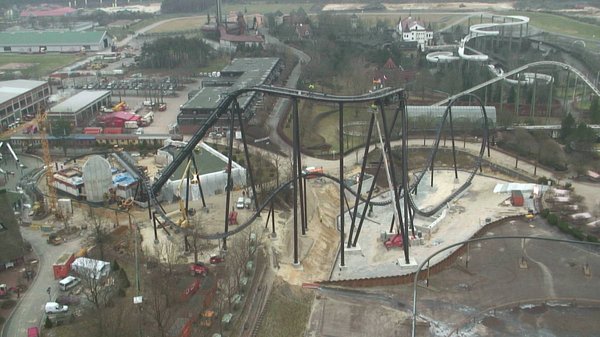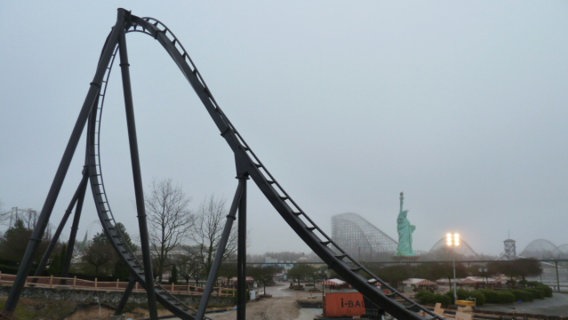Martyn B said:
coasterdude_1 said:
^I think it'd be possible with magnetic brakes to achieve this speed control you're proposing.
Yeah, Thirteen is surely a good example. Though I dont think thats the problem. We're on about it loosing too much speed, as appose to 'not enough'.
I just find it odd that they would be a coaster, with such an awsome drop, that offers fantastic sensations, but you straight away hit some brakes at the bottom....
The same thing could be said about any water braking mechanism- both Griffon, Sheikra etc etc still have to ascend a reasonably substantial hill following the water splash and thus suffer the same effects. They, too will have design speeds for the remaining portion of their layouts that will also require consistency (although I do agree that this is a substantially smaller portion)
To avoid it losing 'too much' speed, it will be simply designed with water braking to intentionally remove too little speed and remove the rest with magnetic brakes which trim to the precise design speed. The scoops can easily be designed with this in mind, as is shown by Sheikra retaining enough speed to reach the top of the hill following its splash
http://www.rcdb.com/2662.htm?p=12153 . I think what is needed to bear in mind is that, although it is not a precise system, it will still produce a speed within a reasonable tolerance
Also observing:
http://img593.imageshack.us/img593/8313 ... 963410.png , it is clear that the splashdown pool is intentionally a separate reservoir to that of the lake which will likely have a carefully monitored water height to minimise any variability in the water height.
In addition, as previously stated, B&M use scoops, rather than blades or fins. Although this trims off more speed, it additionally trims it off more accurately, as the front end of the scoops are fully submerged regardless of the water height (within a range that can be controlled as previously mentioned), which will not be true for blades/fins which work on a more precise assumed water height. With this in mind, although I expect that additional trims will be used to achieve the design speed, I propose that, although water does move etc, because submerged scoops are used rather than any other slowing device, it my be possible to achieve an appropriate speed throughout the rest of the course...
Why put the splash so early on?
I propose its a combination of space available and fitting the layout within this, and also slightly shameless cost saving. Without the water braking early on, there would be greater costs in increasing the height of all layout items, and also possibly increased costs of additional brakes required towards the end of the ride.




